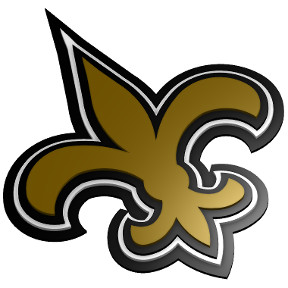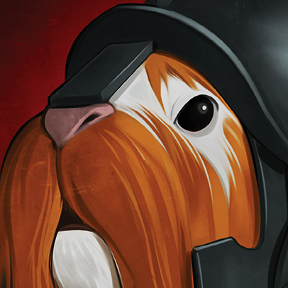Welcome to the Onshape forum! Ask questions and join in the discussions about everything Onshape.
First time visiting? Here are some places to start:- Looking for a certain topic? Check out the categories filter or use Search (upper right).
- Need support? Ask a question to our Community Support category.
- Please submit support tickets for bugs but you can request improvements in the Product Feedback category.
- Be respectful, on topic and if you see a problem, Flag it.
If you would like to contact our Community Manager personally, feel free to send a private message or an email.
Best Of
Re: How Do I Make a Hollow Cone at the End of a Hollow Cylinder? I Keep Getting an Error with Revolve
Try selecting only one half of the cone, I think it should work.
 The_M100
The_M100
Re: Improvements to Onshape - January 10th, 2025
I noticed in the Documents Page video that Supplier Data was misspelled.
Re: Improvements to Onshape - January 10th, 2025
Suppier Data is data that is from a parallel universe. Onshape has servers in multiple universes now. You can access with Onshape Interstellar. 😀
Re: Improvements to Onshape - January 10th, 2025
Wow! Configuration Input Visibility is a game-changer! Thank you Onshape Team!
 AngleC
AngleC
Re: Where Used Without Where Used And Part Confusion
Looking at your fourth pic, this one:
It's showing that there are four airframe screws (presumably that have been derived?).
This indicates a bit of an inefficient workflow.
What you've done here - using the analogy of design methods from 50 years ago - is create a drawing on the drawing board for a "Horizontal Camera Mount" (which is reasonable), and on that drawing you've drawn in multiple counterbore holes (which is reasonable), and you've voluntarily elected to provide a reference to the drawing of the "Airframe Screw" for each of those holes (which is reasonable), however what you've effectively done is made each hole make a reference to a different drawing / part number of "Airframe Screw".
Which is exactly the problem you've described - you've ended up with multiple instances of the same part and that is leading to confusion.
All those references to different drawing / part numbers to "Airframe Screw" might all somehow point back to one singular parent drawing / part number for "Airframe Screw" - but as you're finding out, that's a bit of a pain to untangle. And the "collapsing references" activity to figure out the parent-child relationship between parts and drawings, update references on drawings, make redundant drawings / part number of "Airframe Screw" obsolete, etc, etc is a right pain.
So how to fix this?
First up, in my opinion the Onshape term "Part Studio" can be a bit confusing to people new to the platform. People might get the misleading impression that they're 'creating parts' - and they're no more 'creating parts' today, than draftsmen were 'creating parts' 50 years ago whilst sitting in front of their drawing boards.
Question: Why are you bringing "Airframe screws" into this part studio?
If the answer is that you want the features of your counterbore hole to be logically tied to the features of your countersunk screw - ie: if you make any changes to the screw then it auto-magically makes changes to the hole, then that's a good reason (and why we moved on from using drawing boards! 😊)
However you don't need four (or more) instances of "Airframe screw" to do that.
As a suggested workflow, you have a number of options:
Option 1: Derive one instance of "Airframe screw", generate a "positive hole part (tool)" based on that, delete your airframe screw in the feature tree (it's no longer needed, it has served its purpose), create and move instances of the "positive hole part (tool)" around to all the hole positions, then use boolean subtract to create your holes. The Boolean subtract feature has a "keep tools" function that is disabled by default, so once your holes have been created, the "positive hole part (tool)" will be deleted by default by that operation in the feature tree. Take careful note of this default Onshape behaviour of deleting tools once they're used - it's for a good reason because it helps avoid problems like the one you're having where you end up with multiple extraneous parts clogging things up and causing confusion. Naturally there are times where you need to keep parts / tools for use in other features further down the feature tree, which is why this default behaviour can be over-ridden.
Option 2: Derive one instance of "Airframe screw", move it to the first hole position, use it to create the first hole, translate it to the second hole position, use it to create the second hole, etc, etc, until all the holes are created. Then delete the "Airframe screw" in the feature tree.
Option 3: Derive one instance of "Airframe screw" at the position of the first hole, create your hole, then delete the "Airframe screw" reference. Derive another instance of "Airframe screw" at the position of the second hole, create the second hole, then delete the "Airframe screw" reference. This is probably the least favourable option because the multiple derives probably create a performance hit.
Notice in each of these options, the "Airframe screw" is derived when needed, then deleted as soon as possible. The reason for this is that the purpose of this Part studio is purely to define the "Horizontal Camera Mount" part. Having extraneous parts laying around while you're trying to define a part typically creates problems - as you have found.
But what if you want to see how the Horizontal Camera Mount looks as an assembly with its screws mounted in place? And to check fit? And to do interference checks?
(In my opinion …) it's a bit unfortunate that Onshape allows you to do some of those things in Part Studio because people do use it for that purpose and it's often bad practice to do so. 50 years ago engineers wouldn't have done those things at the drawing board, they would have gone to the modelling shop to get parts made up and then assemble them together …
… which is what "Create Assembly" is for.
As others have suggested, it's probably best to do Onshape's online Assembly tutorials to learn how to use assemblies.
Re: Improvements to Onshape - January 10th, 2025
I've just realized - the change of feature partner on the login screen is synchronized with version updates?
That's a nice little touch - when going to log in and seeing the model is different, it creates an anticipation to see what has changed with the version! :)
Re: Where Used Without Where Used And Part Confusion
Your second and fourth screenshots are multipart part studios, not assemblies.
The third sceenshot IS an assembly but seems to have no parts in the list area on the left.
The link provided does not open for me but gives the error; resources failed to load. Not found. (Though this could just because I'm trying this on my phone!) But check you have made it public in case its not just me who has a problem.
Given your previous statement that they ARE assemblies might I suggest that this might be a thing Onshape does differently.
If you are 'assembling' in a multipart studio, every time you make a part in the studio it will be a new part, that might explain why you have so many screws. You need to make an assembly then you can insert the screw as many times as you like and only have one instance of the screw, but a correct BOM.
Even though you are a CAD veteran it might be worth doing the assemblies tutorial in the learning center.
Re: Where Used Without Where Used And Part Confusion
This is how I arrange things - I created my own library folders, maybe this could work for you. It's obvious that you aren't a beginner, so I hope this info doesn't offend.
- I have a folder named AN/MS library
- In that folder is all the AN hardware that I have created (nuts, bolts, screws, fittings, …)
- Find and insert this hardware into "Assemblies" - not part studios
Like S1mon says - don't derive library parts into "part studios" unless absolutely necessary. This is where your duplicates are coming from. Use the insert command in "assemblies" to add library items. You may want to do a deep dive into "versions" as well.
You can use labels to find your libraries quicker.
I come from a background in solidworks and inventor, where all information is stored on your computer, and you are always concerned with storage space. The hardest thing switching over to OnShape was getting used to the idea that all storage is server side, and is basically unlimited (with-in reason).
I don't feel like I covered this as well as I could have, but I hope this is partially helpful.










